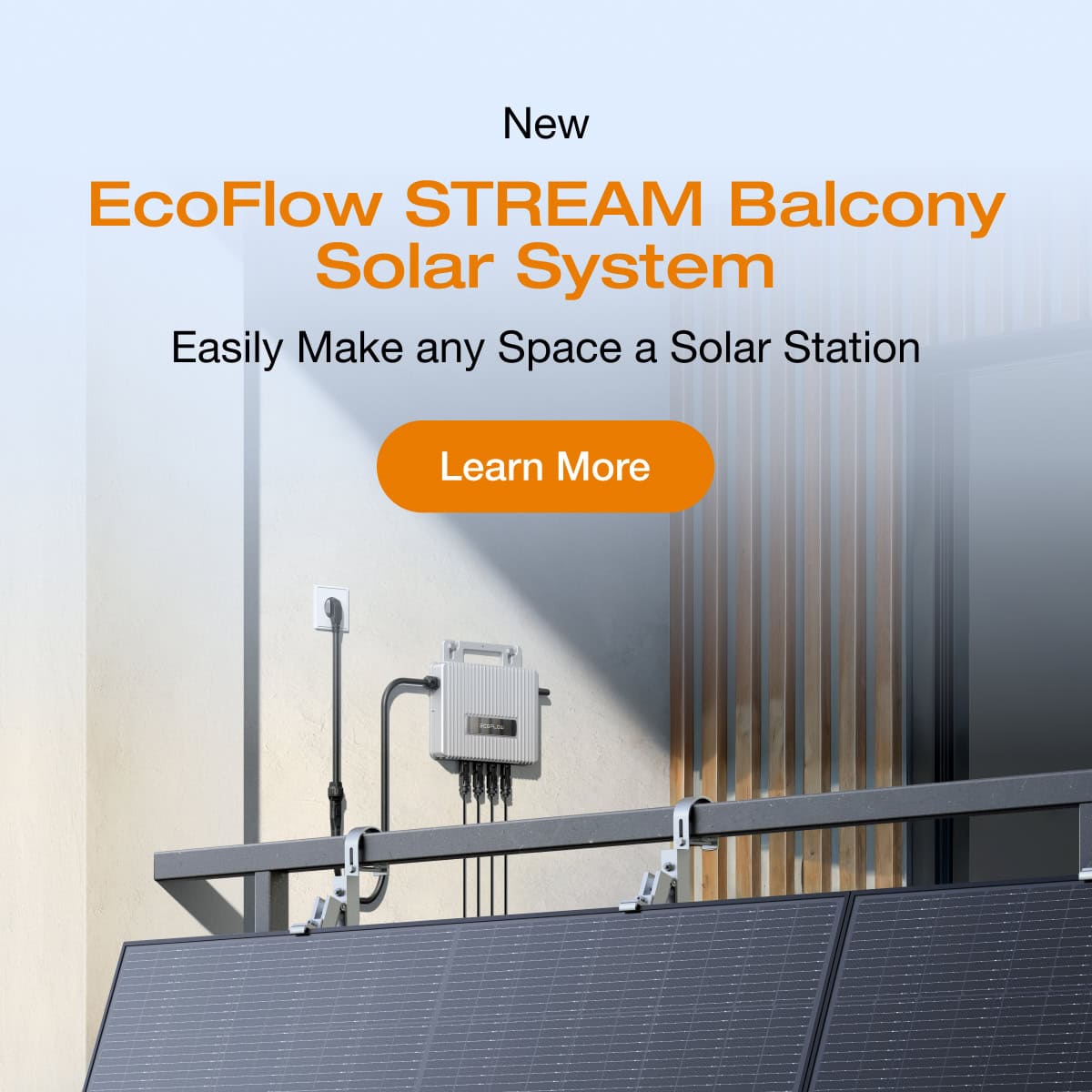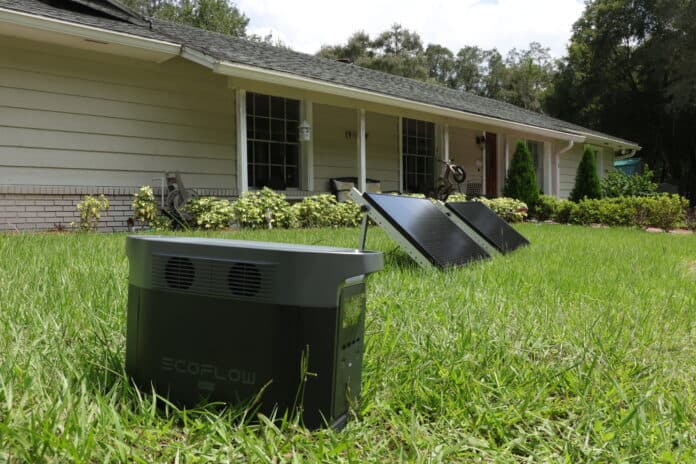The mass adoption of solar power has helped create a clean, renewable, safe, and affordable energy source. But can you run your whole house on solar energy? How many solar panels will you need to generate enough electricity?
Here are the answers to all your burning questions and money-saving tips to avoid additional costs.
Shopping around for a solar system?
You’ve got questions.
Here are the answers.
Can I Run My Whole House on Solar Energy?
Huge strides in technology and scaled-up manufacturing have created highly efficient modern renewable energy systems that are cheaper than ever. You can run your whole house on solar power, even on overcast days, provided you have a portable power station (PPS) like the DELTA Pro and solar panels with enough capacity to generate and store the electricity your lifestyle requires.
A PPS is essential because it stores the electricity your photovoltaic panels generate during the day. The battery provides a reliable backup for your household needs.
Can Solar Panels Power a Whole House at Night?
Solar panels do not generate power at night, but this doesn’t mean that your house will be plunged into darkness the moment the sun sets. An adequate solar panel array produces sufficient power during the day to meet your home electricity needs, which you can store in a portable power station like the DELTA Pro or the EcoFlow River Pro.
How Many Solar Panels Does It Take to Run a Whole House?
The number of solar panels needed to run a whole house is dependent on multiple factors:
- Average sunlight hours
- Your monthly energy consumption rate
- Rated solar panel wattage
- Solar system size
Rated solar panel wattage indicates the amount of electricity the panels produce under ideal environmental conditions.
To calculate solar system size, you need to know your household energy consumption and peak sunlight hours.
For example, suppose your house consumes 886 kWh monthly and has 135 peak sunlight hours. Your calculation is 886 kWh / 135 = 6.6 kW.
You can use the following to calculate the number of panels you need:
- Convert solar system size from kilowatts to watts by multiplying the system size by 1000.
6.6kW x 1000 = 6,600 watts
- Divide the system size (watts) by the rated power of the solar panels you chose for your installation.
If your chosen rigid or portable PV panel has 400 watts of rated power, 6,600 watts / 400 watts = 17 photovoltaic panels.
With this example, you’d need 17 solar panels for a house that consumes 886kWh monthly.
What’s Your Home’s Monthly Energy Consumption Rate?
There are two methods you can apply to answer this question accurately.
The most accurate way to calculate your monthly energy consumption rate is to check your electricity bill. The average usage reflected in kWh will show how much energy you consume over a set period, usually 30 days.
Since most households have dips and peaks in energy consumption depending on the season, it’s best to calculate the average use for 12 months by adding up your utility bills and then dividing by the number of months to get the average monthly rate.
The longer route is to calculate the wattage of each appliance and device, multiply it by the run time for a single day, and sum up the total to get your daily usage. Multiply the sum by 30 to estimate your monthly energy consumption.
Evaluate Your Region’s Solar Energy Production Capacity
The amount of solar energy your PV panels will be able to generate is greatly affected by the climate in your region. If you have many hours of peak sunlight, energy production will be more abundant.
A Smart Home Ecosystem can help maximise energy storage and recharge in less sunny areas. It’s important to note that solar systems are not as efficient in regions with temperatures exceeding 77°F (25°C), but the additional sunlight hours should help offset any decrease in efficiency.
If you’re unsure about the amount of peak sunlight your area receives, do a quick search online for “sunlight hours.”
Assess Your Home’s Surrounding Environment
Your home may be in a region that receives plenty of sunlight, but your local environment also affects your system’s capacity to generate energy.
If your house is under shade for much of the day, your solar panels will generate less electricity due to the lack of direct sunlight. It is important to note that photovoltaic panels can only convert about 15% to 23% of sunlight to electricity, and several factors affect conversion efficiency.
Is Solar Energy the Right Option for You?
The widespread adoption of solar power as a clean, efficient renewable alternative energy source has seen PV panel prices and installation drop significantly, making solar power a desirable energy source.
Solar energy does more than just reduce utility costs. The upfront investment may seem high, but investing in solar technology will save you money, reduce your carbon footprint, and even increase the value of your home in the long run.
Final Words
Renewable, green energy options are a breath of fresh air to consumers looking to reduce their carbon footprint and electricity costs. Solar energy can power your whole house, provided you’ve covered all the bases. EcoFlow’s solutions let you generate energy, store it, and recharge even when you are on the move.
How easy can a renewable lifestyle get?







